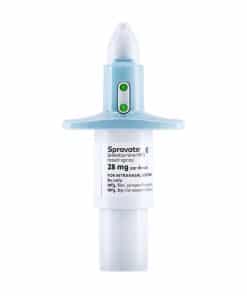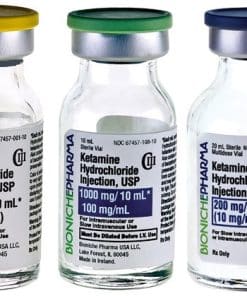Ketamine Crystals
$249.99 – $4,599.99Price range: $249.99 through $4,599.99
BUY LAB-TESTED KETAMINE
Ketamine is an anesthetic, a medication used for the induction and maintenance of anesthesia. It is one of the safest anesthetics, as, in contrast with opiates, ether, and nitrous oxide, it suppresses neither respiration nor heart rate.

Buy ketamine Online | Buy Ketamine Crystals
Buy Ketamine crystals Online. Ket is a dissociative anesthetic that was developed in the early 1960s and used in human and veterinary medicine. The drug is primarily used for anesthesia. Ketamine is a Schedule III drug, which means it is approved for use as an anesthetic in hospitals and other medical settings. It is safe and effective when used in a controlled medical setting, but it also has the potential for misuse and addiction.
Why do people take ketamine?
In large doses, ketamine produces effects in humans similar to phencyclidine (PCP) such as dream-like dissociative states and hallucinations. It has a number of contradictory effects, including stimulant, sedative, anesthetic, and hallucinogenic properties. Users describe feeling like they are drunk, stoned, and tripping all at once.
Ketamine Crystals For Sale
How to Recognize Ketamine
Ketamine usually appears as a clear liquid or a white to off-white powder. It can also be sold in a pill or capsule form. It is tasteless and odorless.
Known As Various street names for ketamine include K, Special K, Vitamin K, super acid, super c, bump, cat Valium, green, honey oil, special La Coke, and jet.
Drug Class: Ketamine is an NMDA receptor antagonist. It has anesthetic, dissociative, and hallucinogenic effects.
Common Side Effects: Ketamine can have side effects including elevated blood pressure, tremors, hallucinations, confusion, and agitation.
How is it used?
Ketamine can be swallowed, snorted, or injected. It is also sometimes smoked with cannabis or tobacco. The effects of ketamine may be experienced within 30 seconds if injected, 5–10 minutes if snorted, and up to 20 minutes if swallowed. The effects of ketamine can last for approximately 45 to 90 minutes.
Order ketamine Online
Effects of ketamine
There is no safe level of drug use. The use of any drug always carries some risk. It’s important to be careful when taking any type of drug.
Ketamine affects everyone differently, based on:
- size, weight, and health
- whether the person is used to taking it
- whether other drugs are taken around the same time
- the amount is taken
- the strength of the drug (varies from batch to batch).
The following effects may be experienced:
- feeling happy and relaxed
- feeling detached from your body (‘falling into a k-hole’)
- hallucinations
- confusion and clumsiness
- increased heart rate and blood pressure
- slurred speech and blurred vision
- anxiety, panic, and violence
- vomiting
- lowered sensitivity to pain.
Overdose
If you take a large amount or have a strong batch, you could overdose. Call an ambulance straight away by dialing triple zero (000) if you have any of these symptoms (ambulance officers don’t need to involve the police):
- inability to move, rigid muscles
- high body temperature, fast heartbeat
- convulsions
- coma and ‘near-death’ experiences
- death.
Coming down
In the day following ketamine use, you may be experiencing:
- memory loss
- impaired judgment, disorientation
- clumsiness
- aches and pains
- depression.
Long-term effects
Regular use of ketamine may eventually cause:
- headaches
- flashbacks
- poor sense of smell (from snorting)
- mood and personality changes, depression
- poor memory, thinking, and concentration
- ketamine bladder syndrome (see below)
- abdominal pain
- needing to use more to get the same effect
- dependence on ketamine
- financial, work, and social problems.
Buy Ketamine Crystals Online
Ketamine bladder syndrome
Large, repeated doses of ketamine may eventually cause ‘ketamine bladder syndrome, a painful condition needing ongoing treatment. Symptoms include difficulty holding in urine, and incontinence, which can cause ulceration in the bladder. Anyone suffering from ketamine bladder syndrome needs to stop using ketamine and see a health professional.
Using ketamine with other drugs
The effects of taking ketamine with other drugs– including over-the-counter or prescribed medications – can be unpredictable and dangerous, and could cause:
- Ketamine + alcohol or opiates: lack of awareness of the effects of the depressant drugs, which may lead to taking too much and vomiting, slowed breathing, coma, and death.
- Ketamine + amphetamines, ecstasy, and cocaine: enormous strain on the body, which can lead to a fast heart rate. Buy Ketamine Crystals
Withdrawal
Giving up ketamine after using it for a long time is challenging because the body has to get used to functioning without it. Withdrawal symptoms usually last for 4-6 days. These symptoms can include:
- cravings for ketamine
- no appetite
- tiredness
- chills, sweating
- restlessness, tremors
- nightmares, anxiety, depression
- irregular and rapid heartbeat.
Buy Ketamine Crystals for Depression
Ketamine is a robust and rapid-acting antidepressant, albeit its effect is transient. Intravenous ketamine infusion in treatment-resistant depression results in improved mood within 4 hours reaching the peak at 24 hours. The effect is diminished at 7 days, and most patients relapse within 10 days, although for a significant minority, the improvement may last 30 days and longer. The main challenge with ketamine treatment is what to do when the anti-depressive action expires.
KETAMINE TREATMENT: THE GAME CHANGER IN UK, FRANCE, GERMANY, CANADA, AUSTRALIA
K-hole is the feeling of getting a high enough dose of ketamine to experience a state of dissociation.
Which drugs cause similar effects?
Other hallucinogenic drugs such as LSD, PCP, and mescaline can cause hallucinations. There are also several drugs such as GHB, Rohypnol, and other depressants that are misused for their amnesiac or sedative properties to facilitate sexual assault.
What is its legal status in the United States?
Since the 1970s, ketamine has been marketed in the United States as an injectable, short-acting anesthetic for use in humans and animals. In 1999, ketamine including its salts, isomers, and salts of isomers, became a Schedule III nonnarcotic substance under the Federal Controlled Substances Act. It has a currently acceptable medical use but some potential for abuse, which may lead to moderate or low physical dependence or high psychological dependence.
Slang for experiences related to Ketamine or effects of Ketamine include:
➔ “K-land” (refers to a mellow & colorful experience)
➔ “K-hole” (refers to the out-of-body, near death experience)
➔ “Baby food” (users sink in to blissful, infantile inertia)
➔ “God” (users are convinced that they have met their maker) The onset of effects is rapid and often occurs within a few minutes of taking the drug, though taking it orally results in a slightly slower onset of effects. Flashbacks have been reported several weeks after ketamine is used. Ketamine may also cause agitation, depression, cognitive difficulties, unconsciousness, and amnesia.
What are common street names?
Common street names include: ➔ Cat Tranquilizer, Cat Valium, Jet K, Kit Kat, Purple, Special K, Special La Coke, Super Acid, Super K, and Vitamin K.
What does it look like?
Ketamine comes in a clear liquid and a white or off-white powder. Powdered ketamine (100 milligrams to 200 milligrams) typically is packaged in small glass vials, small plastic bags, and capsules as well as paper, glassine, or aluminum foil folds.
Revealing complexity: beyond the whole—segmentation of hippocampal subfields in adolescents with depression and its relationships with cognition Case Of Buy Ketamine crystals in Europe
Introduction: The occurrence of depression in adolescence, a critical period of brain development, is linked with neuroanatomical and cognitive abnormalities. Neuroimaging studies have identified hippocampal abnormalities in those of adolescent patients. However, few studies have investigated the atypical developmental trends in hippocampal subfields in adolescents with depression and their relationships with cognitive dysfunctions.
Objectives: To explore the structural abnormalities of hippocampal subfields in patients with youth depression and examine how these abnormalities associated with cognitive deficits.
Methods: We included a sample of 79 first-episode depressive patients (17 males, age = 15.54±1.83) and 71 healthy controls
Order Ketamine Crystals as an adjuvant to opioids for cancer pain
Ketamine is a commonly used anesthetic agent, and in subanaesthetic doses is also given as an adjuvant to opioids for the treatment of refractory cancer pain, when opioids alone or in combination with appropriate adjuvant analgesics prove to be ineffective. Ketamine is known to have psychomimetic (including hallucinogenic), urological, and hepatic adverse effects.
The systematic review has suggested that ‘Hardy et al. Randomized, double-blind, placebo-controlled study to assess the efficacy and toxicity of subcutaneous ketamine in the management of cancer pain. Journal of Clinical Oncology 2012;30(29):3611-7’ is low level evidence. Using the Cochrane Grade tool, it is not clear how this could be the conclusion given the parameters that are included in the tool. The tool is copied below and the way the design and conduct of the study was undertaken is outlined in detail for each.
Description of the condition
Studies report that moderate to severe pain is common in patients with advanced cancer (Are 2017). Cancer pain refractory to standard treatment occurs in 10% to 20% of these patients (Afsharimani 2015). Cancer pain is often of mixed aetiology and may have nociceptive, neuropathic and inflammatory components.
Description of the intervention
The usual indication for using ketamine as an adjuvant to opioid in cancer pain is for pain which is unresponsive to opioids and adjuvant analgesics, for example in the case of refractory neuropathic pain or opioid tolerance.
Why it is important to do this review
This is an update of a Cochrane review first published in 2003 and previously updated in 2012. Ketamine is routinely used in the palliative care setting for the treatment of refractory cancer pain. Earlier versions of this review found limited and heterogenous data, and there was insufficient evidence to be able to make any conclusions. In recent years the standards used to assess evidence in pain trials have changed substantially, for example there is now particular attention being paid to participant withdrawal from trials, and statistical imputation following withdrawal, which can substantially alter estimates of efficacy. The most important change is the move from using average pain scores, or average change in pain scores, to the number of people who have a large decrease in pain (by at least 50%)
| Quantity | 5 Grams, 10 Grams, 50 Grams, 100 Grams |
|---|
3 reviews for Ketamine Crystals
Add a review Cancel reply
Related products
BUY KETAMINE ONLINE
BUY KETAMINE ONLINE
BUY KETAMINE ONLINE
BUY KETAMINE ONLINE








Dr. Steven M. –
“Pure and Consistent Quality”
The ketamine crystals I received were of excellent purity and quality. Perfect for my research needs, they dissolve easily and give consistent results. Delivery was discreet and arrived promptly. Highly recommend Ketam Clinic!
Anna K. –
“Reliable Product for Laboratory Use”
I’ve ordered ketamine crystals several times now, and Ketam Clinic never disappoints. The product is as described, with no impurities. Packaging is secure, and shipping is quick. Will definitely continue purchasing.
David P. –
“Top-Notch Research Chemical Supplier”
Ketam Clinic’s ketamine crystals have been a staple in my lab for months. Consistent batch quality, excellent purity, and professional customer service make this my preferred supplier. Highly recommended!